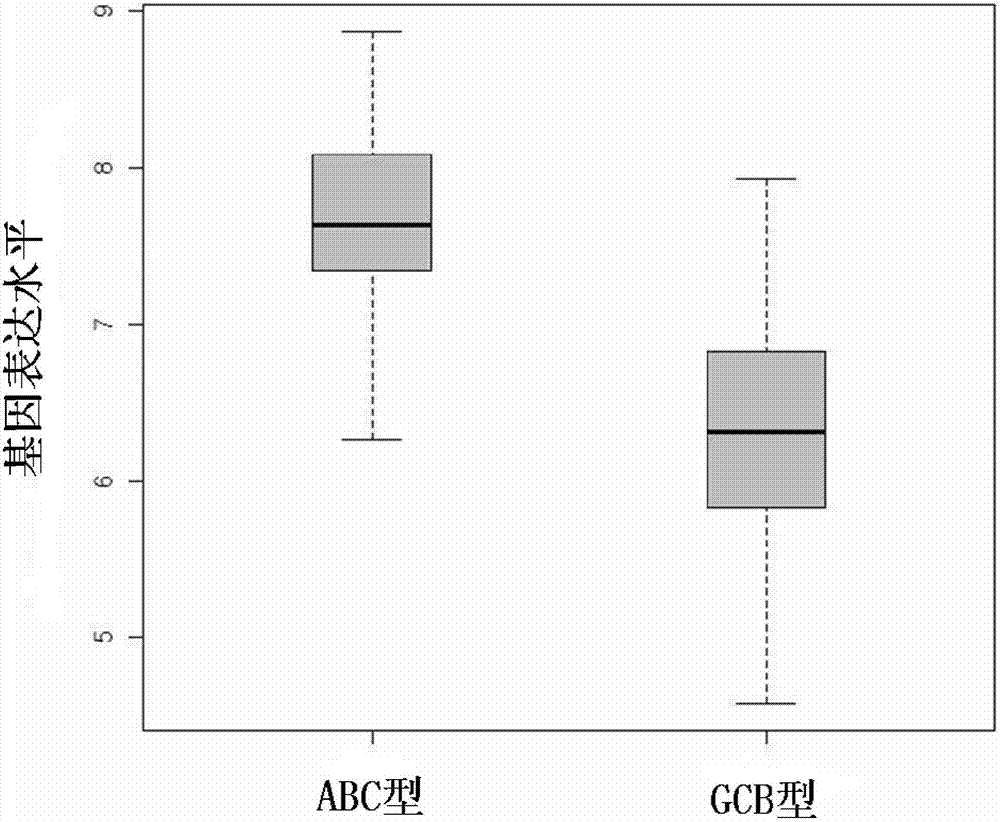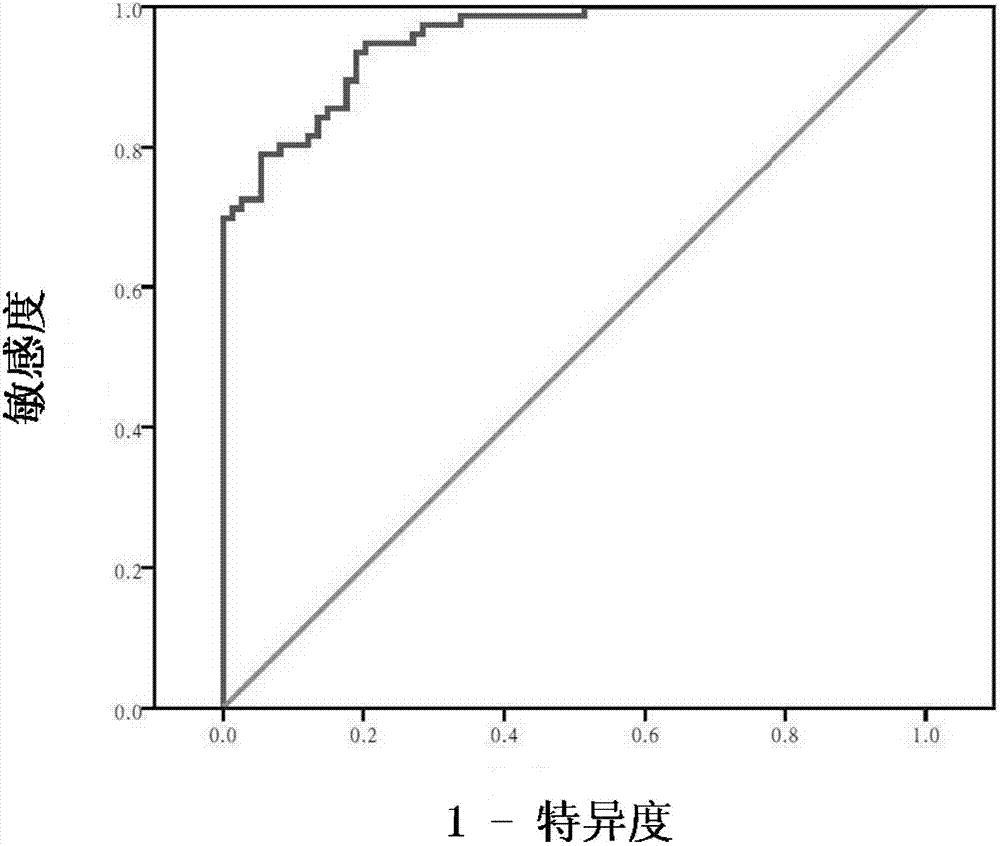Detection method of molecular marker of diffuse large B-cell lymphoma and application thereof
A molecular marker, B cell technology, applied in the fields of biology and medical testing, can solve the problems of high cost, incomplete typing results, inconsistent protein expression levels and gene expression levels, etc., to achieve similar detection results and considerable application. Prospect, good repeatability
- Summary
- Abstract
- Description
- Claims
- Application Information
AI Technical Summary
Problems solved by technology
Method used
Image
Examples
Embodiment 1
[0047] Example 1. Application of LIMD1: MYBL1 indicators in DLBCL patients receiving CHOP-like chemotherapy regimens
[0048] In this example, the inventors used bioinformatics technology to extract the expression levels of LIMD1 and MYBL1 genes in 74 cases of ABC type and 76 cases of GCB type patients receiving CHOP treatment. LIMD1 gene was highly expressed in ABC type patients and lowly expressed in GCB type patients, with statistical difference, t test Pfigure 1 ). Correspondingly, MYBL1 gene was lowly expressed in ABC type patients and highly expressed in GCB type patients, which also had a statistical difference, t test P figure 2 ). The ratio of LIMD1 and MYBL1 expression (LIMD1:MYBL1 index) was further calculated, and compared with the gold standard of gene chip expression profile typing, the ROC curve of LIMD1:MYBL1 index was obtained ( image 3 ). Depend on image 3 It can be seen that the AUC of the LIMD1:MYBL1 indicator ROC curve is 0.95, which shows that the in...
Embodiment 2
[0049] Example 2. Application of LIMD1: MYBL1 indicators in DLBCL patients receiving R-CHOP chemotherapy regimen
[0050]Existing studies have confirmed that the R-CHOP regimen can significantly improve the curative effect of both GCB and non-GCB patients. In this example, the inventors used bioinformatics technology to extract the expression levels of LIMD1 and MYBL1 genes in 93 cases of ABC type and 107 cases of GCB type patients receiving R-CHOP treatment. The expression of LIMD1 gene was up-regulated in patients with ABC type and down-regulated in patients with GCB type, with statistical difference, t test P Figure 5 ); the expression of MYBL1 gene was down-regulated in patients with ABC type and up-regulated in patients with GCB type, which also had a statistical difference, t test P Image 6 ). Comparing the expression levels of LIMD1 and MYBL1, if the expression of MYBL1 is higher than that of LIMD1 (LIMD1:MYBL11), it indicates that the patient is The patient is ABC typ...
Embodiment 3
[0051] Example 3. LIMD1: Application of MYBL1 Prognostic Index in Type3-DLBCL Patients
[0052] Type3-DLBCL does not specifically express the characteristic genes of germinal center B cells and activated peripheral blood B cells, so it does not belong to GCB type or ABC type. Some scholars collectively refer to the third type and the ABC type as the non-GCB type. The gene chip expression profiling method cannot effectively classify this type of DLBCL. In this example, 64 Type3-DLBCL patients were used as an independent research cohort to evaluate the utility of LIMD1:MYBL1 indicators in such patients.
[0053] Among all patients, 31 received CHOP-like regimen and 33 received R-CHOP regimen. The inventors used bioinformatics technology to compare the expression levels of LIMD1 and MYBL1 genes, and obtained the LIMD1:MYBL1 index. If LIMD1:MYBL11, patients are classified into high-risk group (similar to ABC type). The Kaplan-Meier method was used to analyze the relationship b...
PUM
 Login to View More
Login to View More Abstract
Description
Claims
Application Information
 Login to View More
Login to View More - R&D Engineer
- R&D Manager
- IP Professional
- Industry Leading Data Capabilities
- Powerful AI technology
- Patent DNA Extraction
Browse by: Latest US Patents, China's latest patents, Technical Efficacy Thesaurus, Application Domain, Technology Topic, Popular Technical Reports.
© 2024 PatSnap. All rights reserved.Legal|Privacy policy|Modern Slavery Act Transparency Statement|Sitemap|About US| Contact US: help@patsnap.com










